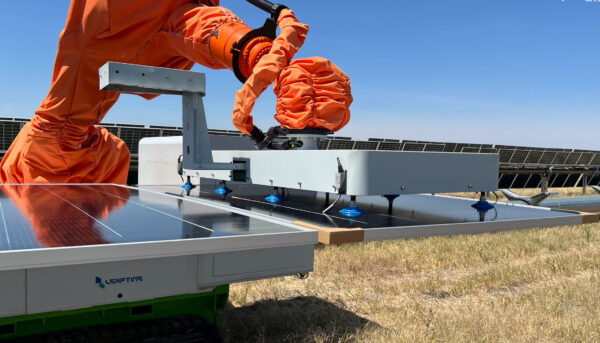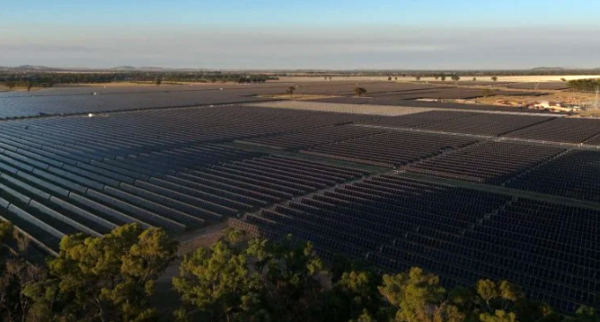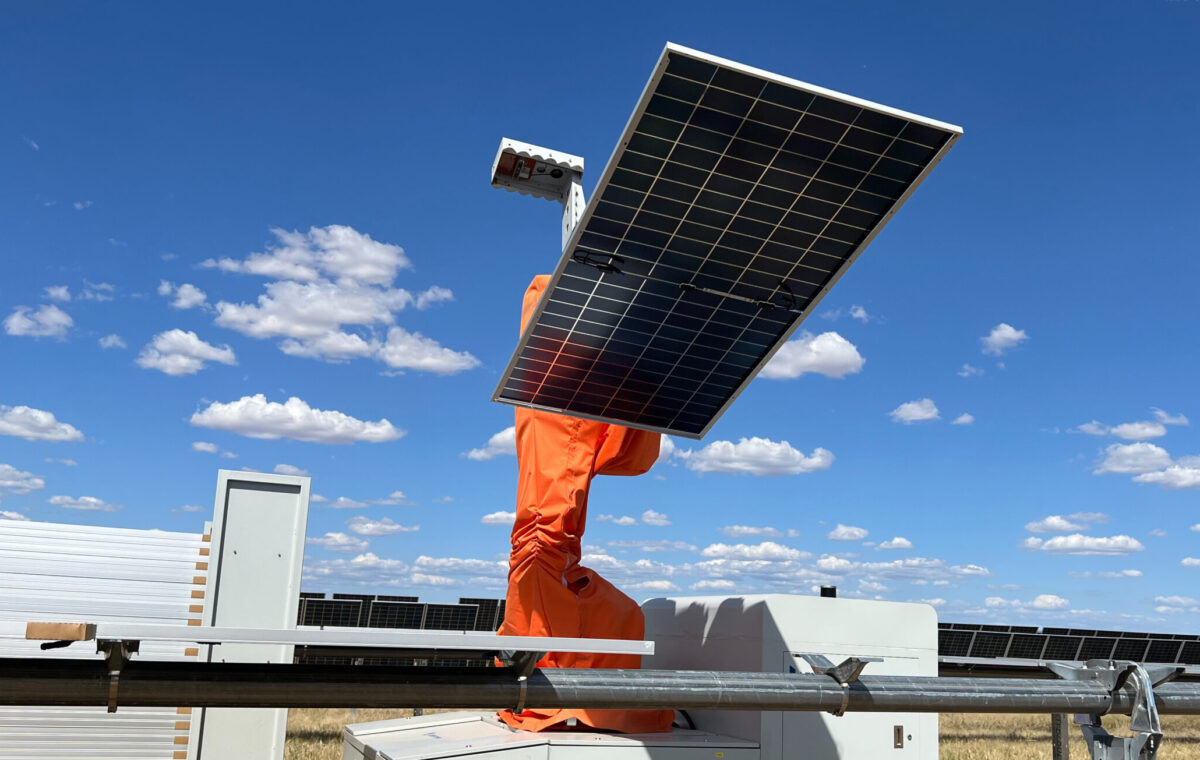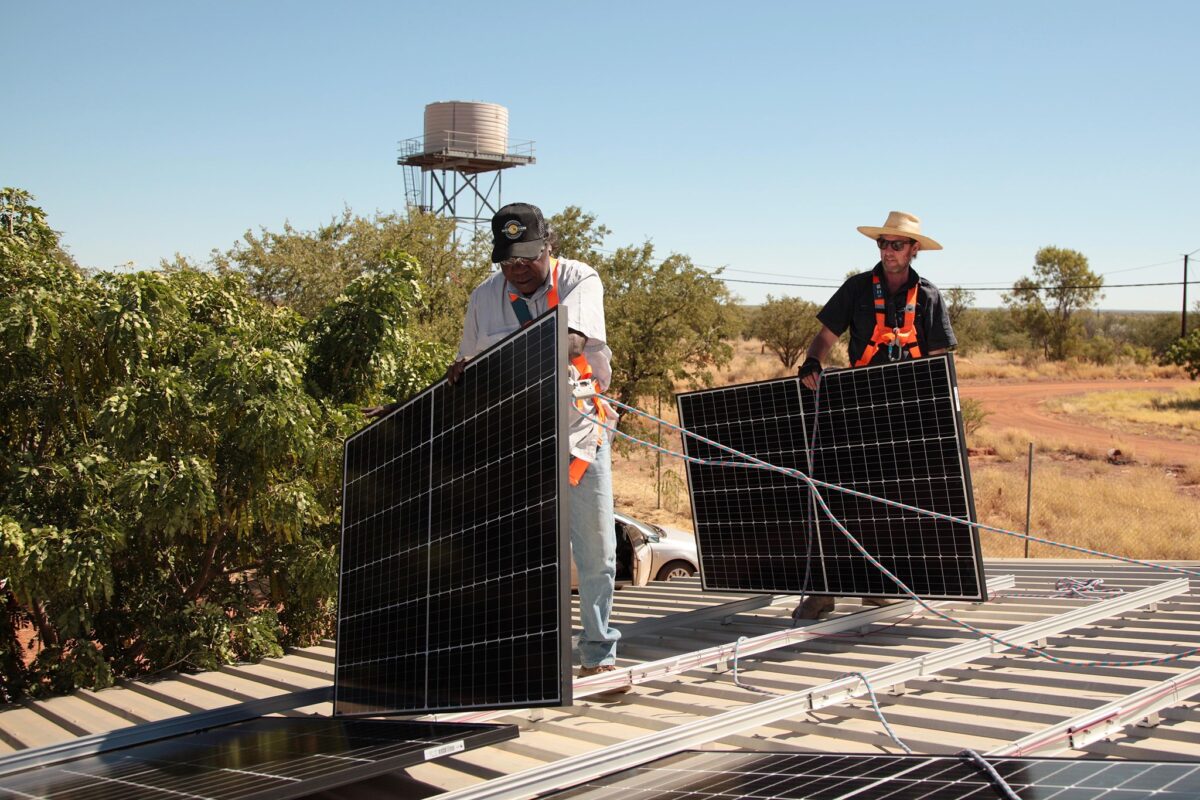China-headquartered smart solutions company LEAPTING’s automatic navigation solar module-mounting robot is helping speed up the installation of French energy giant Neoen’s utility-scale 44o MWp Culcairn solar farm.
Currently under construction in New South Wales (NSW) 50 kilometres north of Albury, the robot is capable of installing 60 modules an hour or one per minute.
It can lift modules weighing up to 30 kilograms and is a 4.5 metre-long, 2.8-metre-wide, and 2.5-metre-high machine, equipped with multi-directional sensors and posture recognition technology, plus a high-passability chassis that enables it to operate in various complex outdoor terrains.
The moducle-mounting robot represents China’s first photovoltaic module installation robot capable of autonomously adapting to challenging work environments.

Emailed to EF via DC from calvin@pv-magazine.com
Core technologies include a high-precision intelligent perception system and powerful visual large model algorithms, integrated with a 3D vision system supported by multi-modal sensors, which allows for real-time perception of the power station infrastructure environment.
It also features automatic identification of photovoltaic module placement and rotation angles, and precise alignment with support inclinations, ensuring accurate control throughout the process.
Compared to traditional manual installation methods, within an 8-hour workday, LEAPTING says a single worker can install approximately 90-120 modules daily, while the robot’s installation efficiency increases by 3-5 times, significantly reducing the overall project duration.
The company says the concept of “robotic replacement of manual installation” is still in the exploratory and refinement stage, but believes through continuous technological innovation, the module-mounting robot will play a crucial role in the intelligent and automated development of the photovoltaic energy field.

Image: Neoen
Neoen says 600 workers installed 98,000 piles at Culcairn in December 2024 and 95% of the tracking structure was complete by February 2025, along with 25% of inverter stations, and over 350,000 solar panels or the equivalent of more than half total modules planned.
They also announced in February 2025, 10 new trainees enrolled through an internal mentoring program and more than 40 First Nations apprentices and trainees have been recruited to the solar farm.
This content is protected by copyright and may not be reused. If you want to cooperate with us and would like to reuse some of our content, please contact: editors@pv-magazine.com.









By submitting this form you agree to pv magazine using your data for the purposes of publishing your comment.
Your personal data will only be disclosed or otherwise transmitted to third parties for the purposes of spam filtering or if this is necessary for technical maintenance of the website. Any other transfer to third parties will not take place unless this is justified on the basis of applicable data protection regulations or if pv magazine is legally obliged to do so.
You may revoke this consent at any time with effect for the future, in which case your personal data will be deleted immediately. Otherwise, your data will be deleted if pv magazine has processed your request or the purpose of data storage is fulfilled.
Further information on data privacy can be found in our Data Protection Policy.